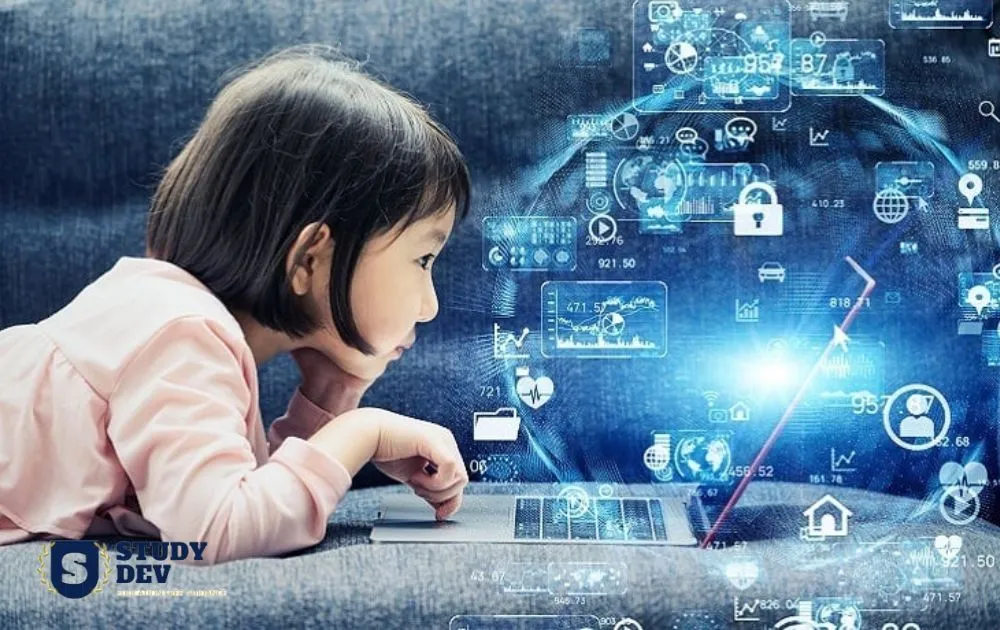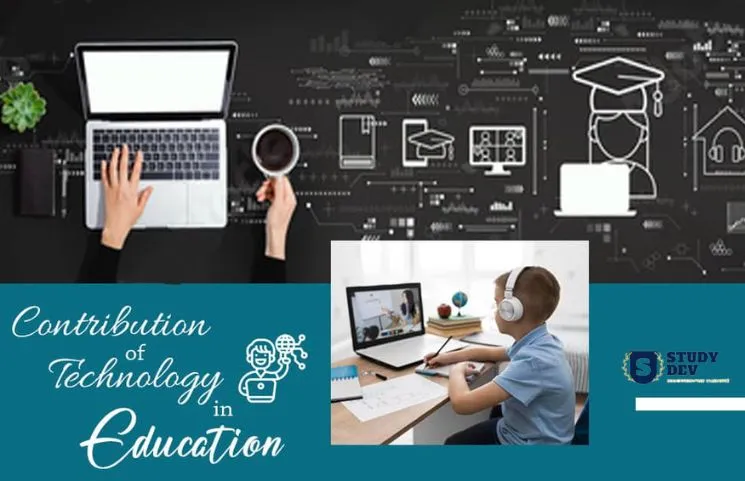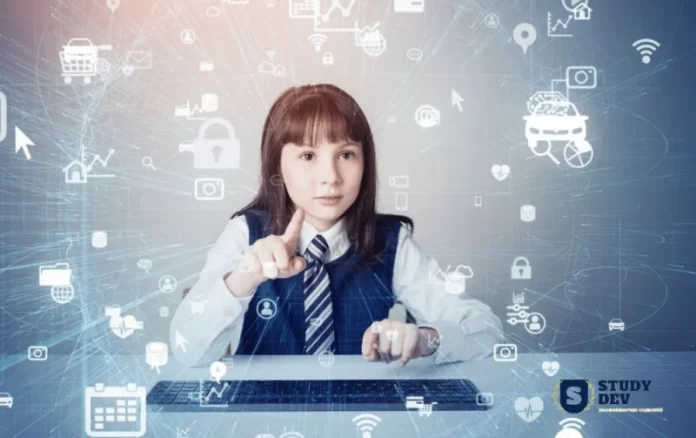Hello friends, You will know that today’s era is of technology, so we are going to give you information about the Contribution of Technology in Education Essay in this article. Today education and technology are running together, both cannot run without each other, so let us know what is the contribution of tech in education in today’s time.
Table of Contents
Contribution of Technology in Education Essay
- Technology in education provides access to a wealth of information and resources.
- It enhances the learning experience through interactive and engaging content.
- Technology facilitates personalized learning and adapts to individual student needs.
- It enables collaboration and communication among students and teachers.
- Online platforms and tools make distance learning possible, expanding educational opportunities.
- Technology improves assessment methods and provides instant feedback.
- It prepares students for the digital era and develops essential 21st-century skills.
- Educational apps and software enhance student motivation and engagement.
- Virtual reality and augmented reality offer immersive learning experiences.
- Technology enables remote and flexible learning, catering to diverse student needs.

Contribution of Technology in Education Essay in 250 Words
Technology has revolutionized the field of education, making learning more accessible, interactive, and engaging. It has become an indispensable tool in classrooms, enabling students to acquire knowledge in a whole new way. The contribution of technology to education is immense and has transformed the learning experience for both students and teachers.
Firstly, technology has made learning more accessible. With the internet and digital devices, students can access a vast amount of information and educational resources from anywhere in the world. This has eliminated the barriers of time and distance, allowing students to learn at their own pace and explore a wide range of subjects.
Furthermore, technology has made learning more interactive and engaging. Interactive software, educational apps, and online platforms provide students with a hands-on learning experience. They can participate in virtual experiments, simulations, and interactive exercises that deepen their understanding of complex concepts. This active engagement enhances their critical thinking, problem-solving, and decision-making skills.
Moreover, technology has personalized the learning experience. Adaptive learning platforms and intelligent tutoring systems analyze students’ strengths and weaknesses and provide tailored instruction accordingly. This personalized approach ensures that students receive individualized support and progress at their own pace, boosting their learning outcomes.
Additionally, technology has expanded the possibilities for collaboration and communication. Online discussion forums, video conferencing, and collaborative platforms enable students to connect with peers and experts from around the world. This promotes cross-cultural understanding, collaboration, and the exchange of ideas, fostering a global perspective among students.
In conclusion, technology has significantly contributed to education by making learning more accessible, interactive, engaging, and personalized. It has opened up new avenues for exploration and collaboration, equipping students with the skills they need to thrive in the modern world. With the continuous advancements in technology, the future of education looks promising, promising further transformation and innovation.
What is the Role of Technology in Education Essay?
-
Customized Learning: Technology allows for personalized and adaptive learning experiences. With the help of digital tools, students can access educational content tailored to their individual needs and learning styles. This promotes better engagement, motivation, and understanding of the subject matter.
- Global Collaboration: Technology enables students to connect and collaborate with peers from different parts of the world. Through online platforms and video conferencing, students can engage in collaborative projects, share ideas, and gain a deeper understanding of diverse cultures and perspectives.
- Interactive Learning: Technology offers interactive and immersive learning experiences that enhance student engagement and participation. Virtual simulations, educational games, and augmented reality applications allow students to actively explore and manipulate concepts, making learning more enjoyable and effective.
- Access to Information: The Internet provides instant access to a vast amount of information and educational resources. Students can conduct research, and access e-books, online libraries, and educational videos, enabling them to explore topics beyond the confines of textbooks and classrooms.
- Digital Skills Development: Technology equips students with essential digital skills that are increasingly required in the modern workforce. Through the use of computers, software applications, and online tools, students develop critical thinking, problem-solving, and digital literacy skills that are vital for their future success.
- Distance Learning Opportunities: Technology has opened up new avenues for distance learning, making education more accessible to individuals who are unable to attend traditional educational institutions. Online courses, webinars, and virtual classrooms allow students to pursue education regardless of geographical barriers or time constraints.
- Data-Driven Insights: Educational technology platforms collect and analyze vast amounts of data on student performance, providing valuable insights to educators. This data can be used to identify areas where students are struggling, track progress, and personalize instruction, enabling teachers to better support individual student needs.
- Inclusive Education: Technology has the potential to make education more inclusive for students with special needs. Assistive technologies, such as text-to-speech software, screen readers, and adaptive devices, enable students with disabilities to participate fully in the learning process, promoting equal opportunities for all.
- Lifelong Learning: Technology fosters a culture of lifelong learning by providing individuals with opportunities for continuous skill development and upskilling. Online courses, webinars, and educational platforms empower individuals to acquire new knowledge and stay updated in a rapidly evolving world.
- Environmental Sustainability: Technology can contribute to environmental sustainability in education by reducing the need for physical resources. Digital textbooks, online assessments, and paperless assignments reduce paper waste and carbon footprint, making education more environmentally friendly.
What is the Relation between Education and Technology?
The relationship between education and technology can be described as a mutually beneficial partnership. Education refers to the process of acquiring knowledge, skills, and values, while technology involves the use of tools, devices, and systems to enhance human activities. When combined, education and technology can greatly enhance learning experiences and outcomes.
Technology has revolutionized education by providing new and innovative ways of teaching and learning. It has made information more accessible, allowing students and educators to access a vast amount of knowledge through the Internet. Technology tools like computers, tablets, and interactive whiteboards enable interactive and engaging learning experiences.
Additionally, technology has expanded the reach of education beyond traditional classrooms. Online learning platforms and educational apps provide opportunities for remote and flexible learning. This enables individuals from various backgrounds and locations to access education, breaking down barriers of time and space.

Contribution of Technology in Education Essay in 350 Words
Introduction:
Learning is the process of gaining knowledge, and it is something that continues throughout our lives. Although anyone can learn at any age, the term “education” is often associated with students and children who attend school. When technology is used for education, it becomes more interesting and convenient.
Role of Technology in Present Education:
- Technology plays a crucial role in enhancing and simplifying education. The easy access to the internet has made learning more accessible. Students no longer have to wait for a teacher to cover a topic; they can easily find information online or through educational apps and platforms.
- Computers, laptops, and mobile phones are widely available for educational purposes. Technology in education is especially beneficial for busy individuals who want to learn new skills to improve their work.
- During the COVID-19 pandemic, when schools were closed, technology allowed education to continue online, ensuring that students did not miss out on a year of learning. Smart classes, equipped with technology, are also available, which makes learning more engaging for students.
Role of Technology in Future Education:
- In the future, books will be available online, reducing the burden of heavy school bags for students.
- Digital education will be promoted, benefiting the environment by reducing paper usage and the pollution caused by paper burning.
- Education will become more accessible, ensuring that every student has equal opportunities for learning.
- Technology will help students develop critical thinking and analytical skills, ultimately raising the overall educational standards.
- Distance will no longer be a barrier to gaining knowledge, thanks to technology.
- It will also enable advanced research programs and facilitate continuous learning of new things.
How Technology is Useful in Covid-19 in India in Education
In the context of education, technology has played a crucial role in supporting learning during the COVID-19 pandemic in India. Here are some ways in which technology has been useful:
- Online Learning Platforms: With the closure of schools and educational institutions, online learning platforms have become essential for remote education. These platforms, such as learning management systems and video conferencing tools, have enabled students and teachers to connect virtually, access educational resources, and continue the learning process from their homes.
- Digital Content and Resources: Technology has made it possible to create and distribute digital content, including textbooks, videos, interactive lessons, and educational apps. These resources have helped students to engage in self-paced learning, access a wide range of educational materials, and explore subjects beyond the limitations of traditional classrooms.
- Virtual Classrooms and Webinars: Virtual classrooms and webinars have allowed teachers to conduct live interactive sessions with students. These platforms enable real-time communication, screen sharing, and collaboration tools, which facilitate active learning and engagement. Students can participate in discussions, ask questions, and receive immediate feedback from teachers.
- Online Assessments and Examinations: Technology has facilitated the conduct of online assessments and examinations. Online assessment tools and platforms have enabled teachers to create and administer quizzes, tests, and assignments remotely. This has allowed for the evaluation of student’s progress and performance even during the pandemic.
- Skill Development and Online Courses: Technology has provided opportunities for skill development and online courses. Platforms like MOOCs (Massive Open Online Courses) offer a wide range of courses in various subjects and skills. Students and professionals can utilize these platforms to acquire new skills, enhance their knowledge, and pursue personal and professional development.
FAQ About Contribution of Technology in Education Essay
Q: How has technology contributed to education?
A: Technology has revolutionized education by enhancing access to information, improving communication and collaboration, and enabling personalized learning experiences.
Q: How has technology improved access to information in education?
A: Technology has made information more accessible through the internet, online libraries, and digital resources, allowing students to explore diverse subjects and learn at their own pace.
Q: How has technology enhanced communication and collaboration in education?
A: Technology tools like video conferencing, online forums, and collaborative platforms have facilitated communication and collaboration among students, teachers, and experts from around the world, promoting global learning opportunities.
Q: How has technology-enabled personalized learning experiences in education?
A: With adaptive learning platforms and intelligent tutoring systems, technology has enabled personalized learning experiences tailored to individual student’s needs, interests, and learning styles.
Q: What are some examples of technology used in education?
A: Examples of technology used in education include interactive whiteboards, tablets, educational apps, virtual reality (VR) simulations, learning management systems (LMS), and online assessment tools.
Q: How has technology made learning more engaging?
A: Technology has made learning more engaging through gamification, interactive multimedia content, and virtual simulations, which create immersive and interactive learning experiences.
Q: How has technology made education more flexible and accessible?
A: Technology has made education more flexible and accessible by offering online courses and distance learning programs, allowing learners to access educational content anytime and anywhere.
Q: How has technology fostered innovation in education?
A: Technology has fostered innovation in education by encouraging new teaching methods, such as blended learning and flipped classrooms, and by promoting the development of educational software and digital resources.
Q: What are the challenges associated with technology in education?
A: Challenges associated with technology in education include the digital divide, lack of digital literacy among teachers and students, cybersecurity risks, and the need for ongoing professional development for educators.
Q: How can technology in education be effectively implemented?
A: Effective implementation of technology in education involves proper infrastructure, training for teachers and students, careful selection of appropriate tools, and regular evaluation of its impact on learning outcomes.
Conclusion:
So, friends, we end our post on this, today we have given you information about the Contribution of Technology in Education Essay and some Important Lines in the Contribution of Technology in Education Essay Full Information is in this post.
We have tried to give you all the information related to the Contribution of Technology in Education, a short few words about mothers in this post so that you do not have to resort to any other website for any information.
So if you liked this hard work of ours, then do share it with your friends on the social media channels given below so that they also get such information.





